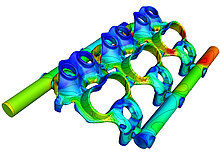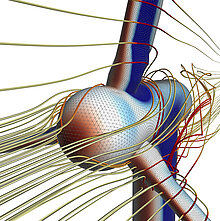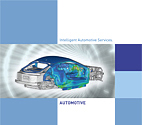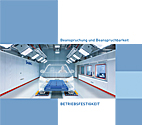
Fluid flow phenomena play an important role in many engineering applications. In all of our key business areas, including the aero-space, automotive, energy and the defence industry, aerodynamic and thermodynamic problems often play a critical role for the functionality and efficiency of machines and systems.
It is often difficult, if at all, to examine fluid flows by experimental means, and it often requires significant engineering and planning efforts. Computational Fluid Dynamics (CFD) offers an attractive alternative.

Applications
- Computer-Aided Design: to determine critical and complex design parameters, e.g. temperature distribution, fluxes, aerodynamic loads, mixing behaviour, particle dispersion
- Design optimisation: to investigate the optimisation potential of systems
- Troubleshooting: to identify sources of errors and to develop engineering solutions
Typical engineering problems
- Heat transfer phenomena (heat transport, radiation, convection)
- Aerodynamic loads on structures (e.g. for wind turbines)
- Atmospheric wind flows
- Building climatisation, HVAC (heating, ventilation, air conditioning)
- Pressure loss calculation
- Aerodynamics of vehicles and buildings
- Pollutant concentration and dispersion (work safety)
- Fire and smoke spread analysis
- Explosion processes in air and under water
Your advantage
- Turn-key solutions: we support our customers during the entire project, from the definition of the engineering problem to the development of a tailored CFD solution.
- Team of experts: our team comprises experts of fluid mechanics, thermodynamics and structure dynamics with extensive experience in numerical simulations.
- Optimised Tools: depending on the type of problem to be solved, we employ the established commercial simulation package ANSYS CFX or the innovative open-source package OpenFOAM. For some specific topics, we also use dedicated solvers such as Fire Dynamics Simulator (FDS) from NIST and our in-house solver DYSMAS. We perform all of our calculations on our in-house state-of-the-art computer cluster.
Wärtsilä Finland Oy, 2016
Gutor by Schneider Electric (Schweiz), 2015
No news available


